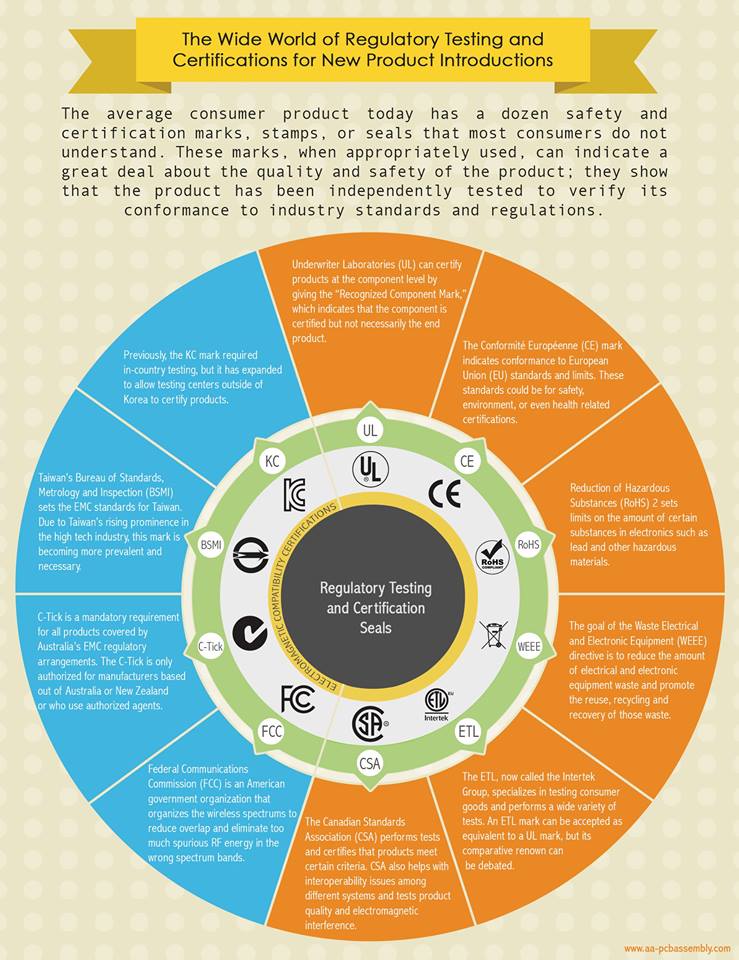The average consumer product today has a dozen safety and certification marks, stamps, or seals that most consumers do not understand. These marks, when appropriately used, can indicate a great deal about the quality and safety of the product; they show that the product has been independently tested to verify its conformance to industry standards and regulations. Some markings are voluntary while others, in certain cases, are mandatory. Even if they are not mandatory, they can make the difference between acceptance and rejection when going through customs. Many times the success of a product is contingent on its certifications. However, learning which certifications are needed and how to receive them can seem overwhelming at first.
One of the first steps during product design should be researching and working toward certification compliance. It is much simpler to implement certain criteria at the start of project than it is to try to change or retrofit the project after the fact. Once the product objective has been defined, you should begin working with the appropriate agencies to start the certification process. This article will elaborate on some of the more well known certifications, what they represent, and in what countries they are accepted.
View the entire article here

Advertisement
Learn more about Advanced Assembly





